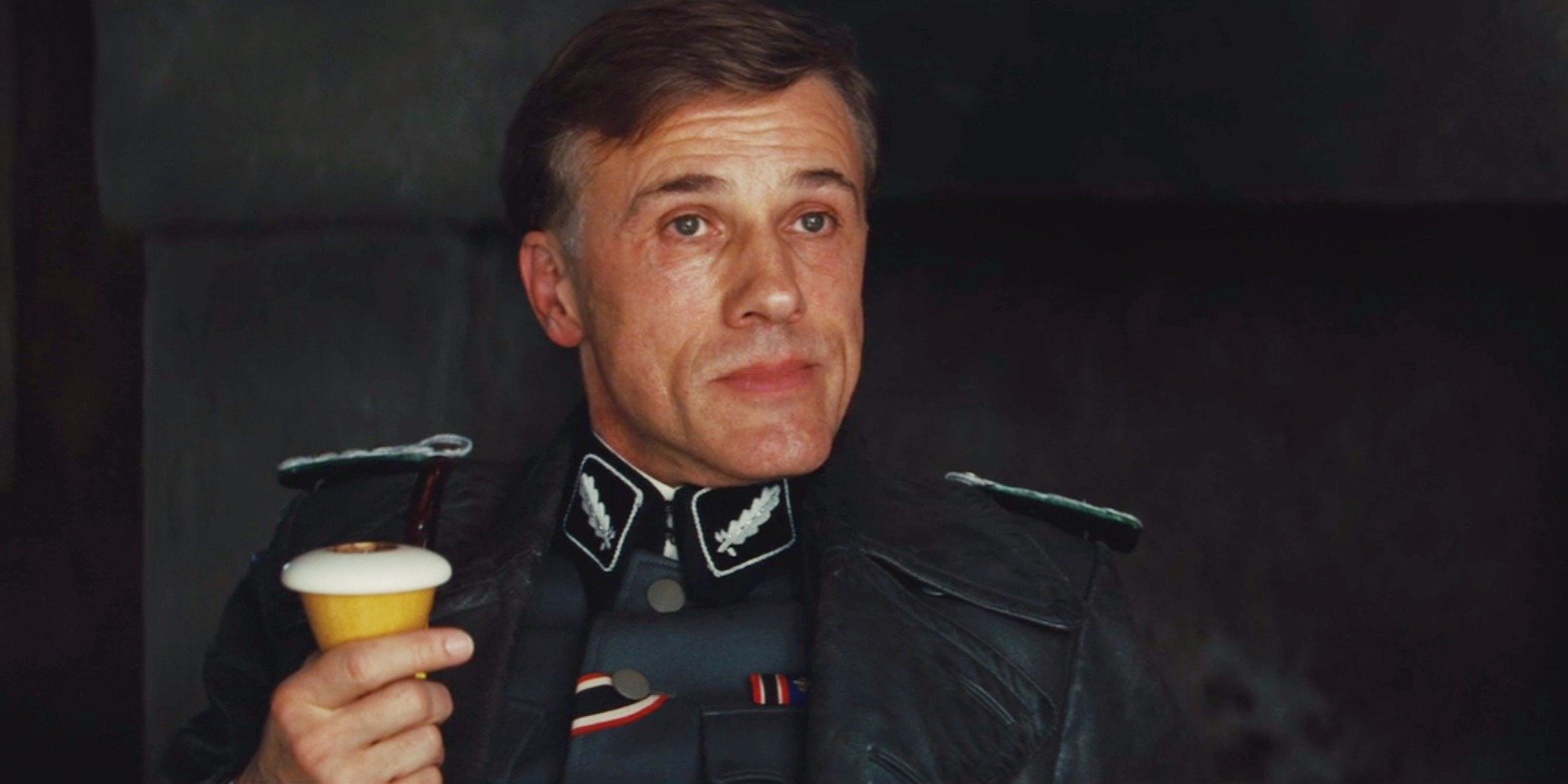
Film is the most hybrid of art forms, taking ideas and traditions from many sources. Perhaps the medium it owes the most to is the legitimate theater, being another platform for performing expressions of art. One long observed motif of the theater is the tradition of giving the production’s lead or prime featured player a grand entrance. This is understandable since the lead or prime featured player will be of great importance to the story and a notable introduction is only appropriate.
Also, the fact of an actor’s ego must also be considered as well. A star just can’t saunter into the film without fanfare. Also, any decent film maker knows that the important character or characters must be denoted.
Of course, not all entrances are created equal. Some are way more memorable than others. The following list, by no means complete, all inclusive, or definitive, celebrates some of the most memorable.
20. John Tuturro in The Big Lebowski (1998)
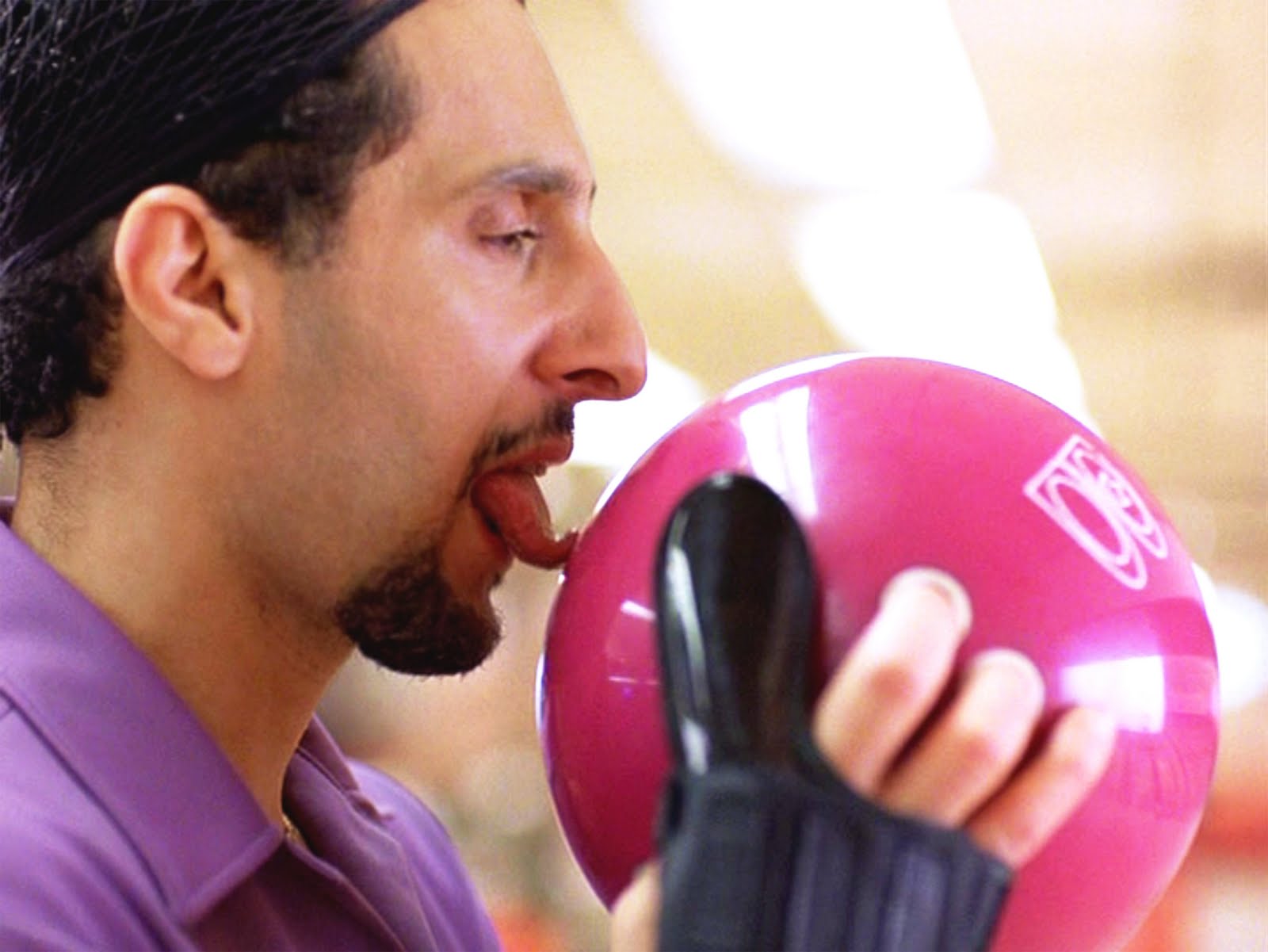
The Coen brothers must surely be true artist for, if they thought of box office at all, they would never make comedy films. Virtually all of their comedy films flop all around on initial release, some for good reasons (The Hudsucker Proxy) and others finding a belated life in cult fandom (Raising Arizona), which is rather cold comfort. Their greatest phoenix is The Big Lebowski, a sly satire of film noir and noir literature, along with digs at stoner, slacker and West Coast living.
This poor film had the daylights panned out it upon release and no one but no one went to see it. In light of the reputation it now has, this is nearly impossible to believe. Not only is Jeff Bridge’s “The Dude” now considered one of the great film (and cultural) icons but a supporting character has proven to be so popular that he is being featured as one of the leads in a new film (pointedly not created by the Coens).
Outside of the mind-altering substances, The Dude’s one holy of holies appears to be bowling and in a rather tacky retro-50’s-60s sort of alley. What would any sport worth playing be without a worthy opponent? The key ingredient in this regard is one Jesus Quintana, a most outré Latino of some sort, speaking with a Puerto Rican accent which many or may not really be his (he currently hails from North Hollywood).
He also constantly refers to himself as “the Jesus”, pronounced, not in the Spanish way, but like the great religious icon. Aside from his garish wardrobe, he also goes into an elaborate ball shining ritual and a wild backwards dance of victory.
“The Jesus” is only onscreen for a little while and if he were cut from the film it wouldn’t affect the plot. However, he adds great texture to a film which is about way more than plot. His appearance during the semi-final bout The Dude engages in is a definite high point (and virtually a swan song as well). The unexpected return of the character may be quite interesting.
19. Peter Lorre in M (1931)
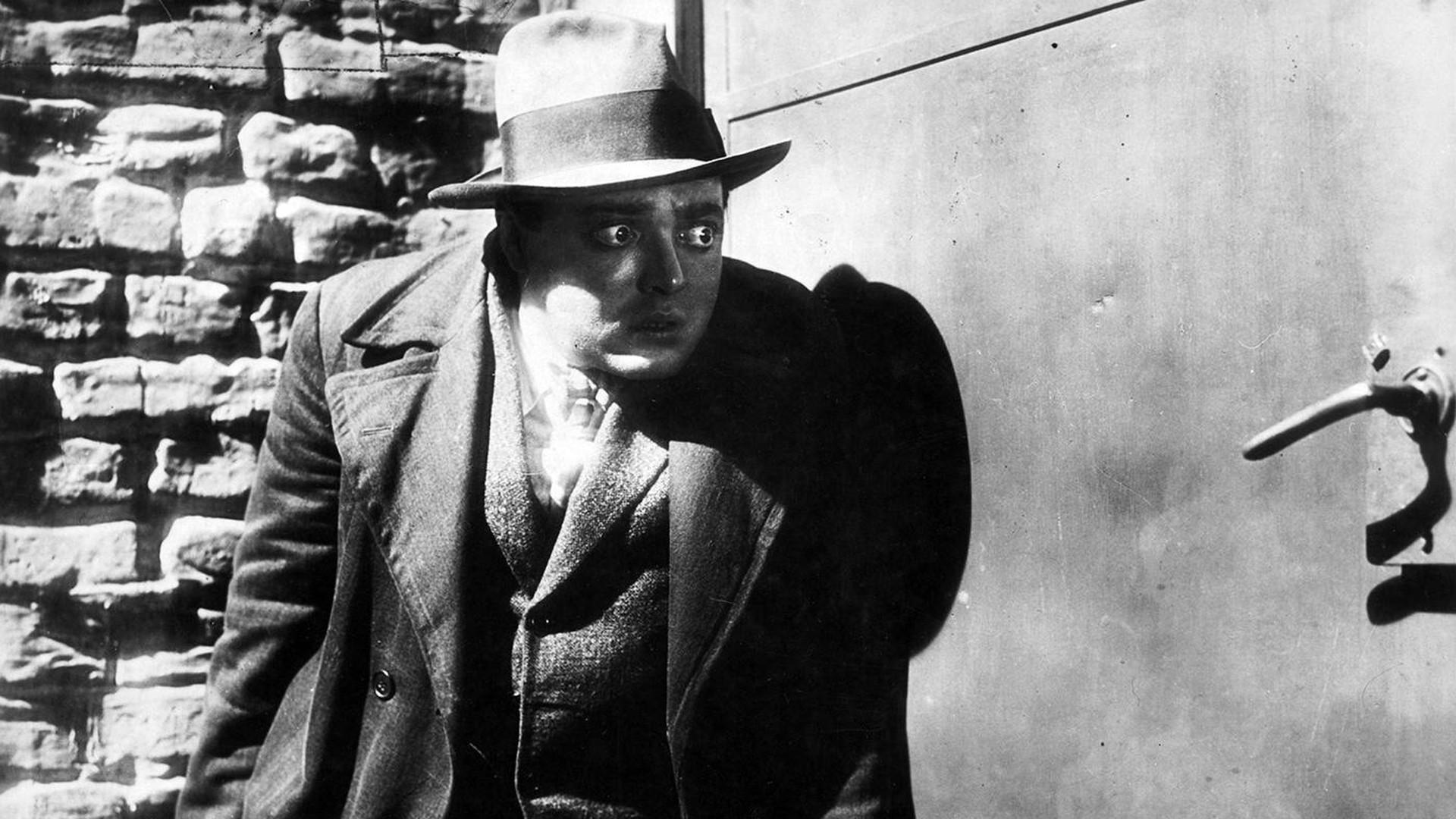
Around the same time Chaplin was refusing to go into sound, the great German director Fritz Lang was making his sound debut. And what a debut it was! M, to many, is Lang’s finest hour (Metropolis, 1926, notwithstanding). The film famously centers on the search for a serial killer of small children. Though the picture is full of characters, the central one is the killer himself, though the character is used somewhat sparingly.
Logically, the actor playing this role needed to be a distinct and overpowering presence, one able to make a great impact in relatively short amount of time. No actor could have fit the bill better than a young and unknown Peter Lorre. With his somewhat blobby frame, huge, bulbous eyes and exaggerated lips, he must have been quite a jolt of the unsuspecting original audience.
Fritz Lang, one of the greatest directors, manages to give the actor two quite different entrances. The opening sequence follows a little girl, who will become the killer’s next victim, as she meets her fate. The child is walking along bouncing her ball and decides to bounce it on a sign plastered on a light pole. The sign is offering a reward for information leading to the capture of the serial killer stalking the city.
At that moment, a shadow falls across the poster and that unforgettable, purring, yet constricted voice complements the child on her pretty ball. The audience sees only the man’s back as he buys her a balloon shaped like a clown.
The scene memorably ends with the ball rolling under a bush and the balloon getting caught in telephone wires and blowing away as the child is dispatched off-screen. Much later in the film, a psychiatrist is explaining to the police what sort of person the killer must be and, abruptly, a short is inserted of a grotesque man making outlandish, yet unnerving faces at himself in the mirror. With that, the viewer has met the killer.
18. Johnny Depp in Pirates of the Carribbean: Curse of the Black Pearl (2003)
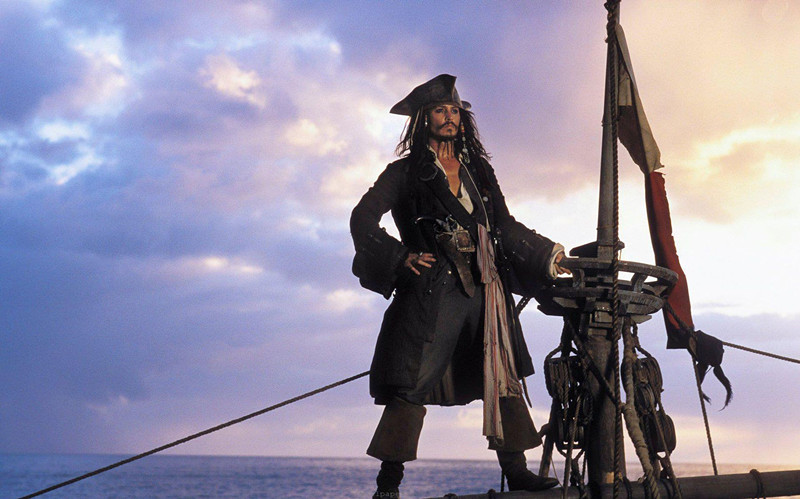
For all his personal and professional ups downs, Johnny Depp should be given credit for sidestepping first teen-fan stardom in the early part of his career and then commercial main-stream stardom later on in favor of following his own quirky artistic muse. Many worried when he accepted a role in a Disney film, of all things, and one based not on a book, story, or play but on a theme park ride!
The faithful needn’t have worried for he managed to find the creativity even inside this decidedly commercial venture. His wildly metro sexual pirate, Captain Jack Sparrow, was a sight indeed.
The sometimes good captain sports the finest eye-shadow job in the fleet, along with lots of braids, bangles, and chic pirate wear and, though he has a tough side to him, his behavior is, well….whimsical might well be a fittingly cautious word to put to it. In his initial adventure he comes to lead a ship in Port Royal, Jamaica and promptly saves the heroine (Keira Knightly) from drowning.
Too bad that the local officials, while grateful for the young woman’s salvation, also feel the need to arrest him (justly) for piracy. That will sum up Jack Sparrow’s history (and he will escape, never fear). This was a fitting start to his cinematic life.
17. John Wayne in Stagecoach (1939)
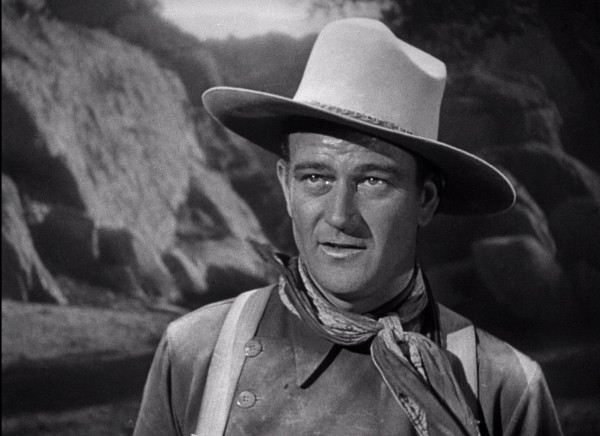
John Ford had been a director since the World War I era and was a top one for most of his career. However, he often (and throughout the length of that career) had project ideas the powers that be at his usual studios, Fox and RKO, couldn’t understand and wouldn’t approve. One such was his seminal western classic, Stagecoach.
The western was undergoing a lull at the time and no one but Ford thought the film a good idea. They would soon enough eat their words but he had to turn to independent producer Walter Wanger to get the film made.
However, Wanger would only front so much money for it and that did not include hiring big stars. Ford remembered a very tall, handsome and charismatic young man (a USC football player at one time) who had done extra work for him in the silent days and who had given a good account of himself in fellow director Rahoul Walsh’s fine but ill-fated early widescreen epic, The Big Trail (1930).
The young man was originally Marion Michael “Duke” Morrison but he had changed his moniker to John Wayne. After The Big Trail bombed a the box office, he ended up working in very cheap B westerns but Ford thought he had the makings of a star.
Stagecoach focuses on the titular vehicle as it traverses a rugged and barren stretch of territory as carries a disparate groups of passengers at the moment a native American uprising is expected and, to top it all off, the infamous Ringo Kid has broken jail! Well, in due time, both show up, the latter way sooner than the former. The Kid’s intro is quite jolting, too.
As the tense coach winds it way forward a shot rings out. The transport comes a stop and the camera cuts to what causes the shot and the interruption.
A very tall and comely young man (and, yes, there was a time John Wayne was young and handsome) is standing in the road twirling his rifle. He is way younger than the audience expects and neither mean nor vicious looking (the Kid, like the leading lady, prostitute Dallas{Claire Trevor} is a victim of circumstances). He is shooting not to threaten, but to let the coach know that the Indians are about to attack. It was a great star intro to the film and Wayne’s starring career.
16. Gene Wilder in Willy Wonka and the Chocolate Factory (1972)
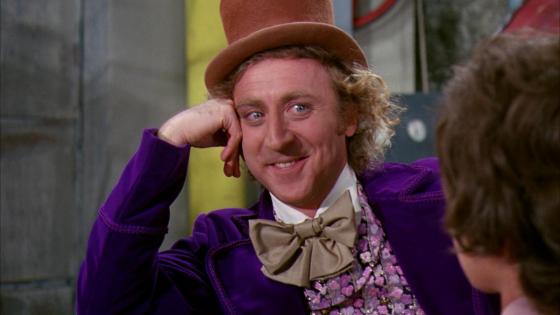
When the occasion called for it, Gene Wilder could muster vaudevillian ham with the best of them. However, he was also a very subtle and ingenious comic presence when the situation called for that side of his talent. His 2016 death brought out memories of many memorable performances he rendered throughout his career.
Oddly enough, one of the performances best loved by the current adult generation was one which was most controversial and even reviled at the time of the release of the film which contained it. (In point of fact, his performance was often cited as a big reason for the film’s failure during its initial release.)
Films adapted from the works of children’s writer Roald Dahl often were misunderstood by adults upon first release, only to be resurrected and loved by those lucky enough to see them as children. The king of this sub-genre was the first also, Willy Wonka and the Chocolate Factory (taken from Charlie and Chocolate Factory and The Great Glass Elevator).
The story concerns Willy Wonka, the ultra-mysterious owner of a legendary candy factory which produces some of the best sweets on earth, though even a cursory glance shows that this factory is no ordinary place. However, the place is always off limits and Wonka has not come out in public in years.
The world is amazed when the Wonka factory announces a contest in which a handful of golden tickets are hidden inside candy bars distributed the world over and those lucky enough to find them will be granted a visit to the factory conducted by Wonka himself.
After several minutes of running time, the winning children and their guardians gather at the factory’s gate in view of a wondering public. At the appointed time, the factory door opens and the willowy man with longish hair dressed in a pseudo-Victorian outfit (in colors no Victorian ever wore) crowned by a top hat, comes limping down the front stairs on a cane. H
alf-way through his walk to the children, a missteps shows that the cane is an affectation and not needed at all. In this one scene, the viewer now knows that the peculiar but magnetic Wonka is not as he seems, a lesson which should not be lost on his visitors. Wilder deliberately plays the character without winking at the audience. This was unnerving to some then but now looks to have been an inspired choice.
15. Rita Hayworth in Gilda (1946)
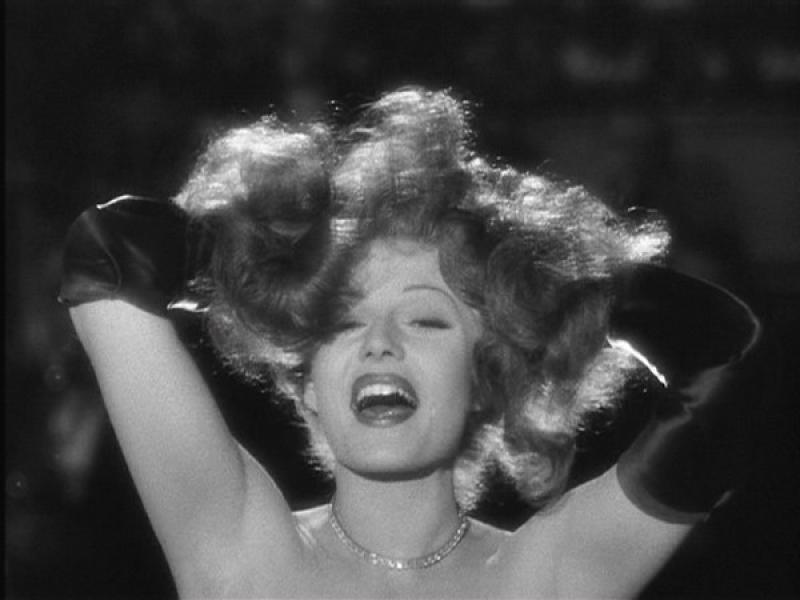
1940s and early 50s “love goddess” Rita Hayworth was, in many ways, the essence of classic era Hollywood. She was beautiful and elegantly presented in terms of how she was dressed, made up and coiffed. Her half Latina heritage (and original name) were supplanted in rendering her homogenized for public movie going consumption.
Also, sad to say, she was far more image than anything else since her only real talent was the dancing in which she had been taught since childhood. Perhaps because her beauty, the kind that often seems to belong to the mixture of ethnic groups (her mother was Irish-American), lead to one of the rare times looks really made up for lack of not only talent but presence as well. She was truly like a blank screen upon which an audience could project what it wished.
This may well be why the title character in Gilda, her most memorable role, marked her forever, though her performance was no more pronounced than usual. The titular character is a woman of mystery who had been engaged in a relationship with a gambler (Glen Ford) which could only be charitably termed volatile.
The film opens with the gambler falling under the sway of a spidery millionaire (George Macready, always a visual flashcard for evil) who seems to be giving off most ambivalent sexual vibes. About twenty minutes into the film the man returns from a business trip to tell his now right hand man that he has very suddenly gotten married. He takes the younger man to the bedroom suite he now shares with the bride, who is heard humming a song. The husband asks if she’s “decent” (meaning dressed).
The camera cuts to a shot of lush looking bedroom curtains and the head and shoulders of a young woman, who seems to have been leaning over brushing her hair, comes up into view. The luscious mane is covering her face until a sharp backwards motion whips it back into place revealing a stunning heart shaped face with perfect doll-like features.
She insolently says, “Decent? Sure I’m decent”. She then looks at the man standing next to her husband and her expression shows the she is seeing a not very welcome face from her past. The plot is now in motion and Hayworth has a perfect setting to “be” and let the viewer do the rest.